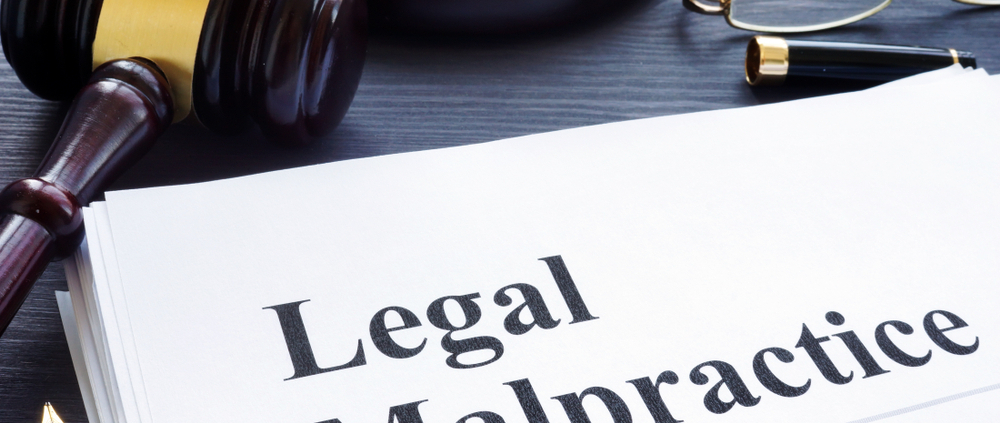Legal Malpractice Fraud: A Journey from Trust to Betrayal- What, How and Prevalence
By Linda Nwoke
The world is full of uncertainties and injustice. Many people find themselves seeking the services of legal professionals for guidance on matters that can shape their future, as they are deemed guardians of people’s rights. Many clients seek the services of an attorney for various reasons ⸺ whether it’s drafting a will to secure a family’s legacy, navigating a business deal containing legal jargon, or seeking compensation for a personal injury that altered the course of their life. The reasons for seeking legal counsel are as diverse as the myriad challenges life throws people’s way.
In all, the individual seeks insight to navigate the legal maze, as they believe that within the chambers of a law office, they’ll find solace, protection, and, above all, unwavering trust. Yet, in pursuing justice, what happens when the same entrusted advocates manifest deception and engage in fraudulent acts?
The realm of legal malpractice and fraud is often shrouded in secrecy; when uncovered, it reveals a disturbing narrative where trust turns into betrayal, leaving clients questioning the legal system and the relationships built on faith in the expertise of legal practitioners.
At the core of the issue are cases of miscalculated “judgment calls” and ignoring ethical boundaries.
Examples of Legal Malpractices
Suppose Mr. Grant hired an attorney to handle a real estate transaction. The attorney needed to follow Mr. Grant’s specific instructions regarding the terms of the sale, resulting in him receiving significantly less money than they had anticipated. The court found that the attorney’s negligence had caused Mr. Ferguson substantial financial harm and held the attorney liable for malpractice.
In another case, an attorney caused a breach of fiduciary duty or conflict of interest. An attorney represented two clients (Ms. Brown and Ms. Jackson) with opposing interests in a business dispute. The attorney failed to disclose the conflict of interest to either client and represented both parties. This resulted in the attorney providing conflicting advice and pursuing strategies that benefited one client at the expense of the other. The court found that the attorney had breached their fiduciary duty and held the firm liable for malpractice.
Another example involves a legal firm that routinely overcharges clients for their services, billing for hours of not working and inflating expenses. The legal firm also used deceptive billing practices, such as breaking tasks into smaller increments, to increase the total cost. When the clients discovered the fraudulent billing, they filed a lawsuit against the firm. The court found that they had engaged in intentional fraud and ordered them to pay restitution to the clients.
Notably, not all adverse outcomes in a legal matter are considered legal malpractice or fraud. In some cases, the clients may experience unfavorable results due to factors beyond the attorney’s control, such as unforeseen legal obstacles or changes in the law. However, suppose an attorney’s actions or omissions fall below the standard of care or breach their fiduciary duty. In that case, they may be liable for legal malpractice or fraud.
Prevalence of Legal Malpractice and Fraud
Interestingly, there are a significant number of malpractice lawsuits against attorneys. An average of 3% of lawyers will deal with a malpractice claim at some point in their careers. According to the American Bar Association (ABA) database, they capture the number of malpractice claims against attorneys, which provides valuable insights into the frequency, types, and outcomes of the cases.
According to the ABA’s data, in 2021, over 8,000 malpractice claims were filed against attorneys in the United States. New York State recorded one of the highest malpractice lawsuits filed against attorneys. According to the New York State Office of Court Administration, over 1,400 malpractice claims were filed against attorneys in New York in 2021, representing approximately 17% of all malpractice claims filed against attorneys in the United States in that year.
Over 45% of claims are resolved, while 35% are dismissed, and only 10% of most cases go to trial. The average settlement amount in 2021 was $75,000.
Factors that lead to legal malpractice
Observers have noted that legal malpractice or fraud can result from unintentional errors and intentional misconduct, broadly categorized into three main groups:
First is negligence, the most common cause of legal malpractice and fraud. It often occurs when an attorney needs to exercise the care, skill, and diligence a typical prudent attorney would exercise under similar circumstances. Some of the manifestations of negligence are embedded in failures, specifically:
- Failure to follow client instructions within the bounds of the law can result in significant prejudice to the client’s interests.
- Failure to properly investigate a case before advising a client leads to flawed legal strategies and detrimental outcomes for clients.
- The failure to meet deadlines is because attorneys effectively manage too many caseloads. Missing deadlines can jeopardize clients’ rights and expose attorneys to malpractice liability.
Another factor is the breach of fiduciary duty, which means they must act in the client’s best interests. A violation of this duty can constitute legal malpractice or fraud, such as:
- Conflicts of interest that could compromise the attorney’s ability to provide impartial representation of clients with opposing interests or fail to disclose potential conflicts can constitute malpractice.
- Attorneys use their position of trust to advance their interests at the expense of their clients, also known as self-dealing. An example will be misappropriating client funds or overcharging for services.
- Misrepresenting facts, concealing important information, or making false promises can constitute malpractice. Attorneys must provide clients with accurate and honest information about their legal matters.
Finally, there is intentional misconduct, including fraudulent billing, falsifying evidence, and perjury. When an attorney or their law firm deliberately overcharges clients for services or billing for services not rendered, or in another instance, creates or alters evidence to mislead the court or manipulate the outcome of a case, they are intentional—the deliberate act of making false statements under oath in legal proceedings.
A Strategic Approach to Navigating Legal Malpractice
If you find yourself entangled in the aftermath of potential legal malpractice, acting swiftly in a well-informed manner is crucial to seeking resolution. Start by diligently gathering all pertinent evidence, ranging from emails to court documents, to provide a solid foundation for your claim.
Armed with this documentation, consulting with a specialized attorney in legal malpractice, leveraging their expertise to assess the validity of your case, and receiving tailored guidance on available legal options is pertinent.
Subsequently, consider filing a formal complaint with your state’s bar association, the regulatory body overseeing attorney conduct. This step triggers an investigation that may result in disciplinary measures against the implicated attorney if misconduct is substantiated. For those who have suffered significant harm, exploring the option of a lawsuit is advisable. Engage an attorney well-versed in legal malpractice litigation to navigate the complexities of this process, recognizing the potential for a prolonged but necessary journey toward resolution.
Seeking Justice in New York
Legal malpractice or fraud victims in New York can initiate a formal complaint through the New York State Attorney Grievance Committee (AGC). The AGC serves as the regulatory authority responsible for investigating and disciplining attorneys found to violate the New York Rules of Professional Conduct.
They have offices across New York State, and individuals can access contact details for their local AGC office from the New York State Attorney Grievance Committee.
To commence the complaint process with the AGC, complainants must complete a complaint form and submit accompanying documentation supporting their case. Upon receipt, the AGC will review the complaint, determining whether an investigation is warranted. If required, they initiate an investigation; the AGC will contact the complainant’s attorney for additional information.
When the AGC concludes that the attorney breached the New York Rules of Professional Conduct, they may impose disciplinary actions, such as a reprimand, suspension, or disbarment.
While filing a complaint with the AGC is one avenue, individuals may also contemplate pursuing a lawsuit against the attorney. It is a separate process and option from filing a complaint with the AGC, and the decision to pursue either option rests entirely with the aggrieved person.
Guidance
Contact the Civil Rights Law Firm of Figeroux & Associates. Once you make that choice, one of our attorneys will carefully evaluate your situation to determine whether or not you have a case. If it’s determined that you do have a case, we will guide you throughout the entire process to recover any money that you might be entitled to. The Civil Rights Law Firm of Figeroux & Associates will go after the maximum settlement for you. No Settlement – No Fee! The Lawyer you hire does make a difference! Contact us today. Call 855-768-8845 or visit www.askthelawyer.us to schedule an appointment.












Leave a Reply
Want to join the discussion?Feel free to contribute!